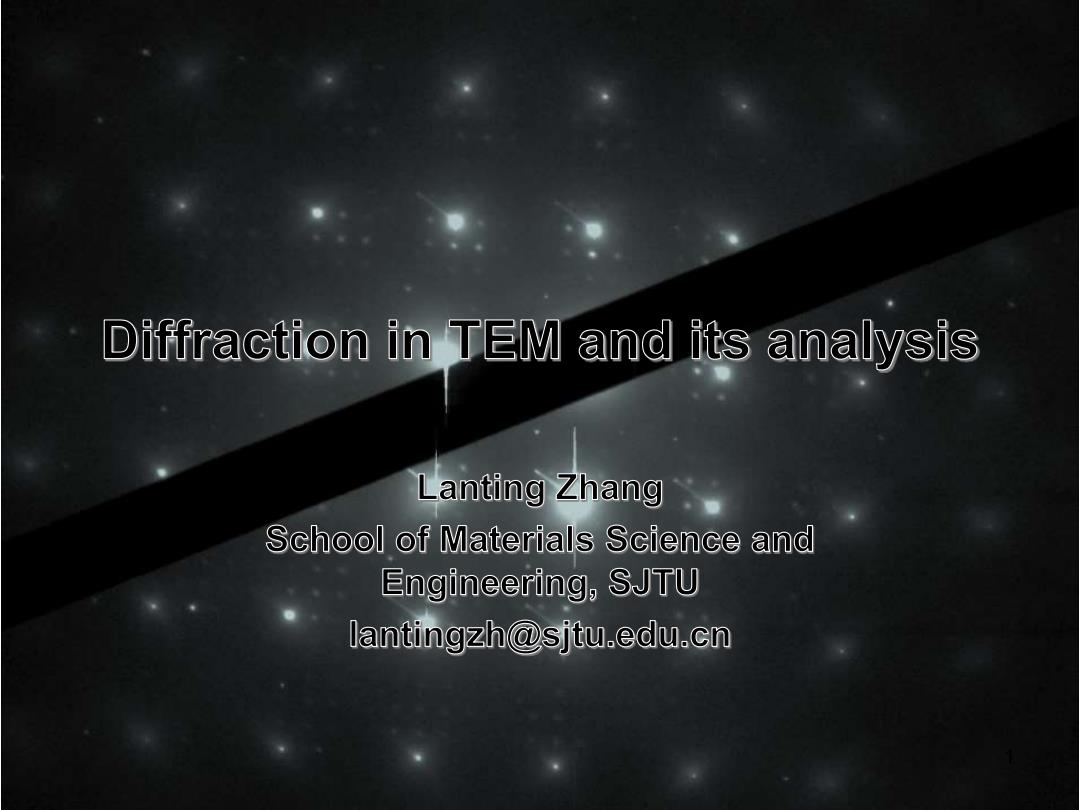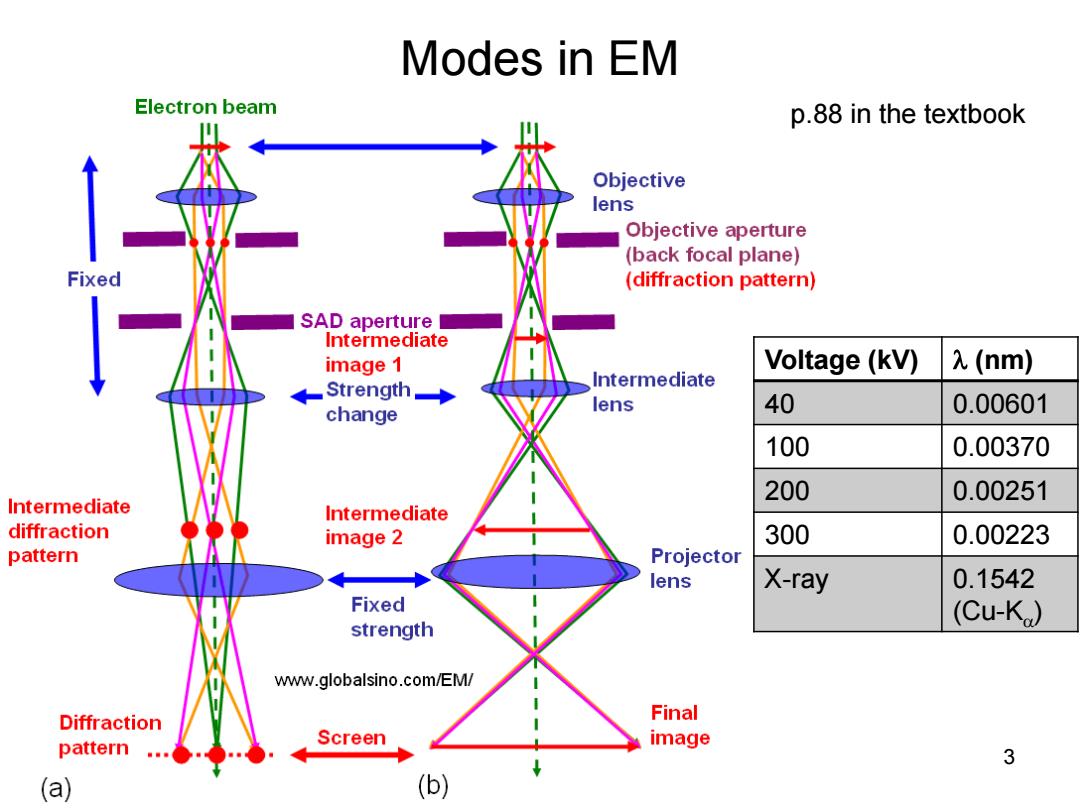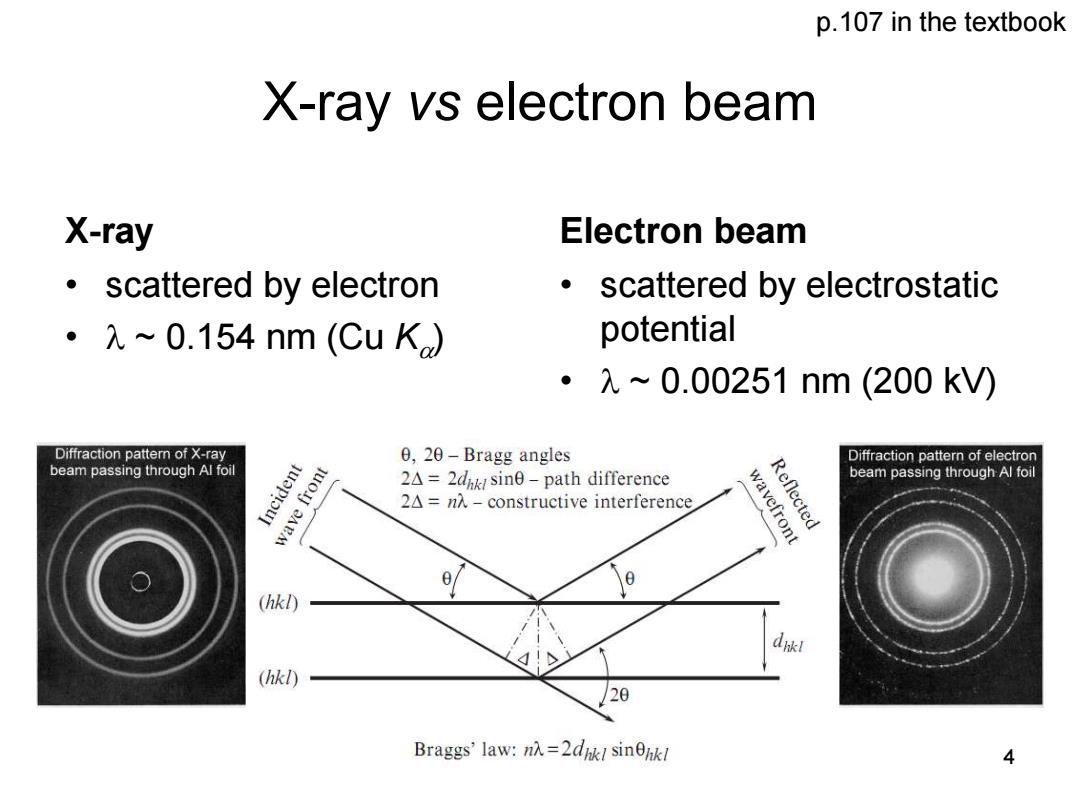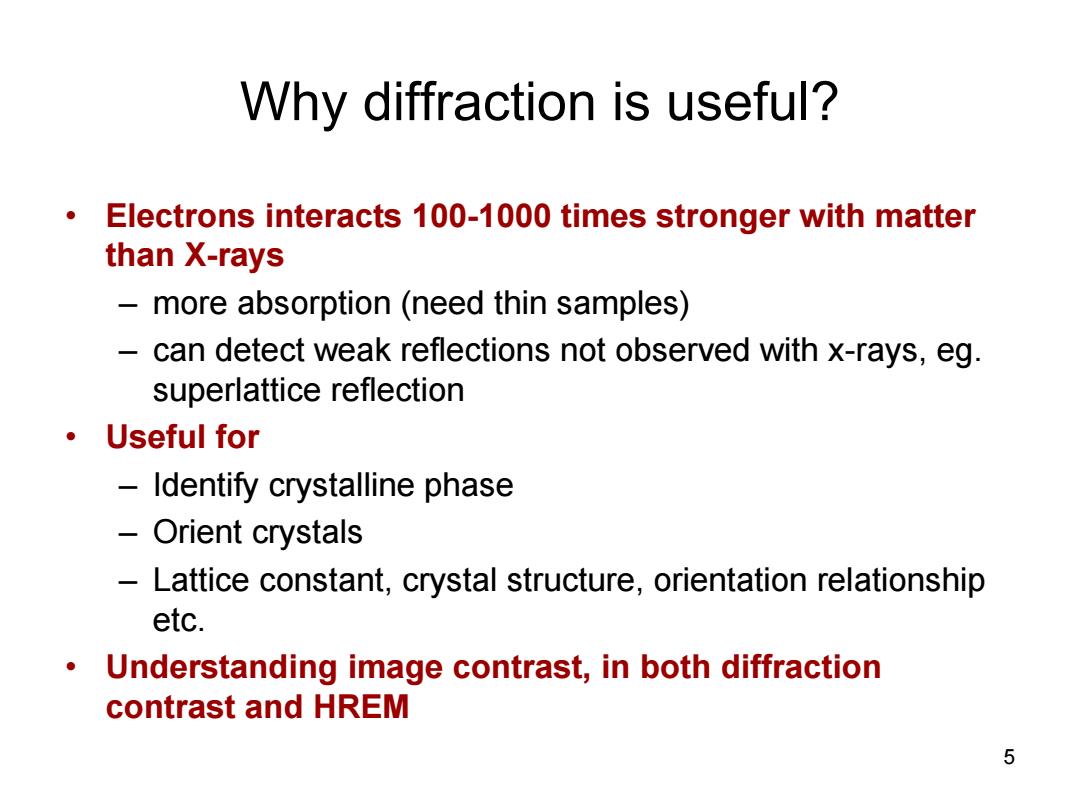
Diffraction in TEM and its analysis Lanting Zhang School of Materials Science and Engineering,SJTU lantingzh@sjtu.edu.cn
1

Basic principles Electrons (SEM) BSE X-rays(EDS) Diffraction (elastic interaction) -X-rays -Electrons ·ED in TEM and EBSD in SEM Neutrons SE E=Eo E<Eo (EELS) The same basic theory for all waves. (TEM and ED) 2
Basic principles 2 The same basic theory for all waves. • Diffraction (elastic interaction) – X-rays – Electrons • ED in TEM and EBSD in SEM – Neutrons

Modes in EM Electron beam p.88 in the textbook Objective lens Objective aperture (back focal plane) Fixed (diffraction pattern) SAD aperture Intermediate image 1 Voltage (kV) 2(nm) Strength Intermediate change lens 40 0.00601 100 0.00370 200 0.00251 Intermediate Intermediate diffraction image 2 300 0.00223 pattern Projector lens X-ray 0.1542 Fixed (Cu-K) strength www.globalsino.com/EM/ Diffraction Final pattern Screen image 3 (a) (b)
Modes in EM 3 Voltage (kV) (nm) 40 0.00601 100 0.00370 200 0.00251 300 0.00223 X-ray 0.1542 (Cu-K ) p.88 in the textbook

p.107 in the textbook X-ray vs electron beam X-ray Electron beam scattered by electron scattered by electrostatic 。元~0.154nm(CuKa potential ·λ~0.00251nm(200kV) Diffraction pattern of X-ray 0,20-Bragg angles Diffraction pattern of electron beam passing through Al foil Incident 2A=2dik sine-path difference Reflected beam passing through Al foil wave front 2A=nA-constructive interference wavefront (hkl) (hkl) Braggs'law:n=2d sink 4
X-ray vs electron beam X-ray • scattered by electron • ~ 0.154 nm (Cu K ) Electron beam • scattered by electrostatic potential • ~ 0.00251 nm (200 kV) 4 p.107 in the textbook

Why diffraction is useful? Electrons interacts 100-1000 times stronger with matter than X-rays more absorption (need thin samples) can detect weak reflections not observed with x-rays,eg. superlattice reflection ·Useful for Identify crystalline phase -Orient crystals Lattice constant,crystal structure,orientation relationship etc. Understanding image contrast,in both diffraction contrast and HREM 5
Why diffraction is useful? • Electrons interacts 100-1000 times stronger with matter than X-rays – more absorption (need thin samples) – can detect weak reflections not observed with x-rays, eg. superlattice reflection • Useful for – Identify crystalline phase – Orient crystals – Lattice constant, crystal structure, orientation relationship etc. • Understanding image contrast, in both diffraction contrast and HREM 5